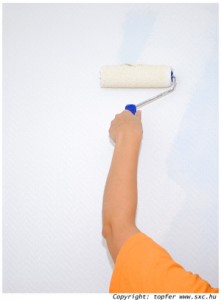How to Start a Business for First-Timers

This post is sponsored by Forté. All opinions are 100% my own!
Starting a business is hard. First, you have to refine your business idea, read up on your industry, and conduct market research. Then it’s time to set up your legal structure—to establish yourself as an official business with the US government.
I am fortunate enough to be the first in my family to start a business. I started by turning my blog, Miss Millennia Magazine, into an LLC. I have established 3 more businesses since then, and each new venture is a reminder that there are so many necessary steps to take.
Without proper guidance, it can be difficult knowing what you should be doing to get all your ducks in a row. So if you’re a first-timer considering entrepreneurship, here are my tips.
Understand your business idea inside and out
Before you file any kind of paperwork to become an official business, you have to understand your business. This means learning the NAICS code for your company, deciding if you are a for-profit or non-profit organization and if you’ll be operating in a physical place or all online. These are the kind of questions you’re going to have to answer when you’re filing all the paperwork, so it’s good to know ahead of time. You may want to create a business plan when starting out.
When I did this the first time, I kept having to start and stop since I hadn’t fully fleshed out my business idea. I would start paperwork only to find that I had no idea what a certain question even meant. The process took me forever and made me realize why it’s important to have a clear vision from the beginning.
Here are a few things you may want to know before you start filing paperwork.
- Your company NAICS code
- How you’d like to file (LLC, S-Corp, etc)
- The bank you will use for your business
- If it’s a partnership, you need a partnership agreement
- How often you’re planning to file taxes
- Your role/title in your business
Depending on your industry, there may be additional details you want to know, but this is a good place to start!
Know what paperwork to file
Once you have all the necessary information you need, it’s time to file paperwork.
The basics include filing with the IRS for an EIN number and filing for your entity type. To get started, go to the Secretary of State website for the state you’re located in to file for your entity. SBA.gov has great info on which business structure you should choose. You can check that out here.
To file with the IRS, go to IRS.gov to get an EIN number for your business. They have a ton of resources that make it easy for small business owners to file properly and understand what they need to do with their taxes as their business grows. You can see all of the IRS’s resources here.
Those are the big ones. Depending on your industry, there are a few other things you may want to consider doing:
- File for a trademark
- File for a DBA (Doing Business As)
- Trademark Search and Registration
- Patents
- Copyright Registration
Brush Up On New Skills
You are going to learn so much in your new business. Some things may be learned quickly; other things, not so much. You may want to consider getting your MBA: it is a great way to firm up your knowledge of finance, accounting, marketing, and strategy, and it lets people know to take you and your business seriously.
If the idea of getting your MBA sounds intimidating, I know an awesome resource anyone can sign up for, and it’s called Forte.
Forté is a career resource for women who are navigating those firsts. Forté motivates women through role models who speak at events and share their stories online. And they have a number of resources that make it easier for you to prepare to get your MBA.
They answer questions such as:
- How do you get started when you’re thinking about getting an MBA?
- How do you apply to business school?
- How do you take care of your family and career while you are working on your application or continuing your education?
Join Forté to get all your questions answered and build your network of like-minded women. Forté’s MBALaunch is a guided 10-month program that will help you build your best business school application.
You can join their free membership which is a strong community of women who have been there and done that. Click here to learn more and sign up for a free membership.
There are so many things that go into business ownership, and I hope this article provides a valuable starting point for you! I wish you luck that your good idea will one day turn into a great business!









